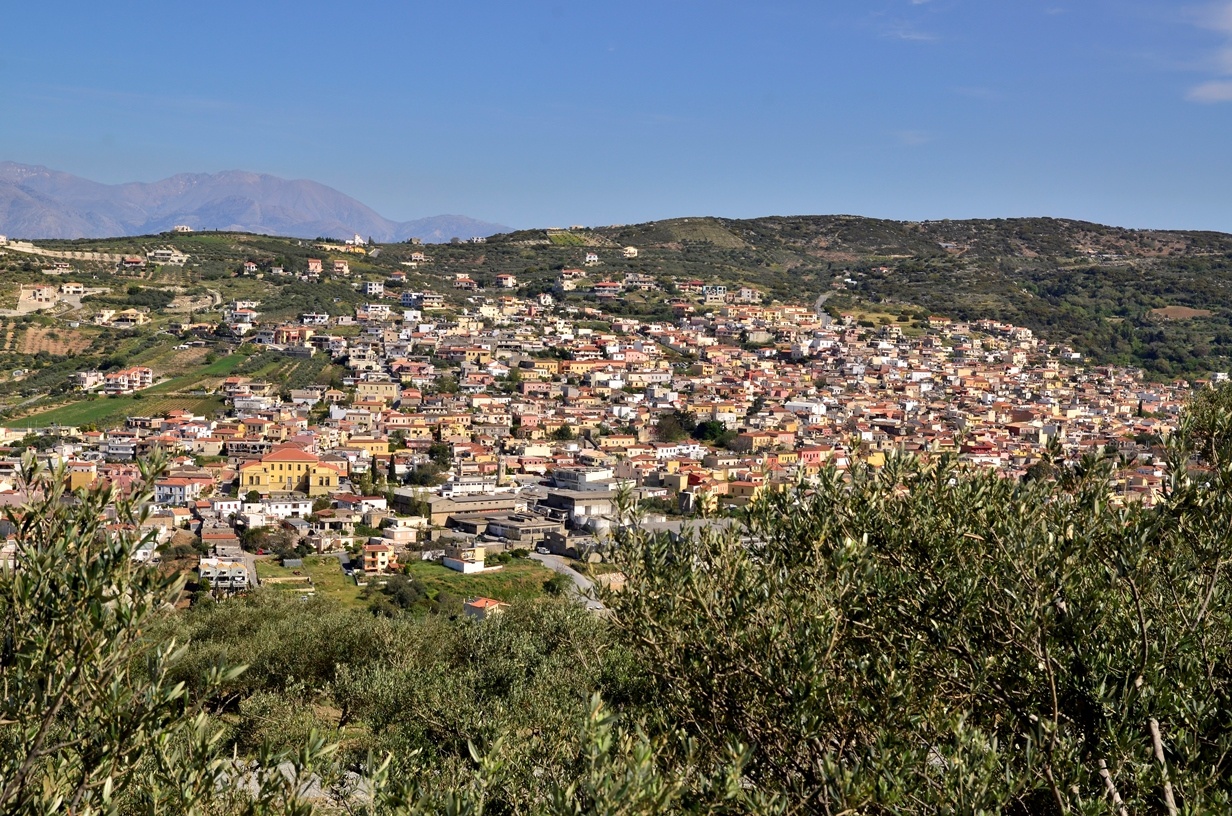
The school of Pano Archanes is a noteworthy building from the end of the 19th century.
The first study was undertaken by architect Saliveros in 1899. Saliveros was part of the staff of the Commissioner of Crete, Prince George. The land selected for the school construction was at ‘Patitiria’ (stomping vats) location in the north-eastern entrance to the hamlet, where, during the great Cretan Revolution of 1897, there used to be the camp of the ‘Select Cretan Battalion’ commanded by Ioannis Dafotis. The building plans were drafted according to recommendations given by schoolteacher Simantiras, in order to meet the needs of the town. The size and significance of the building testify to the importance given to covering the building needs for the education of a rich and important hamlet.
Its plans were completed in 1901 and construction started immediately; works were completed with donations from rich Archanians living in the USA. The building operated as a school until the Second World War. They then had to transfer the patients from the Pananeion Municipal Hospital of Heraklion and the wounded from the Battle of Crete here. During the Nazi Occupation, the Nazi Division under Müller was housed in the building; Müller was replaced by General Kreipe. From this commanding centre, Müller coordinated the operations of the famous battle at Viannos. It was also from this building that in April 1943, General Kreipe departed after a reception on the occasion of a Nazi anniversary, to return to his overnight accommodation in Knossos; along the way he was kidnapped at Patsides by resistance groups and then transported to Egypt.
After the liberation, the school building housed the resistance organisations of Eastern Crete for a short while and after 1954 it started operating as a school again.
It is a stone building with a wooden roof covered with ceramic tiles. The floor plans of the basement and ground floors are Π-shaped, while the top floor is constructed only over the middle part; this gives the architectural composition a monumental character. It is a very interesting example of a special purpose building, constructed following the standards of neoclassical urban architecture, as applied in a wealthy provincial centre, an invaluable specimen for the study of architectural history; the school is an integral part of the history of the place and the memories of its people.
Today, the listed historic building has been renovated so that it can serve in the most effective manner the structures it houses, namely the Greek Open University, the Superior School of Paedagogy & Technology Education (A.S.PAI. TE), the Centre for Life-long Learning of the Municipality and the Town Hall services.



